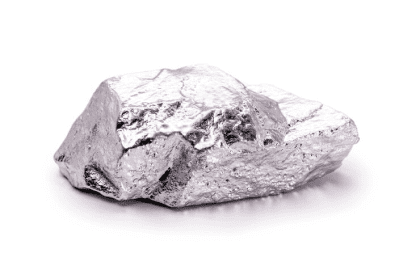Tantalum
-
Carbon
Carbon
-
Copper
Copper
-
Tantalum
Tantalum
-
Coltan
Coltan
-
Magnetite Iron
Magnetite Iron
-
Manganese
Manganese
-
Graphite
Graphite
Our Brochures
Contact Us
Social Media


Tantalum is a very hard, ductile, lustrous, blue-gray transition metal that is highly corrosion-resistant. It is part of the refractory metals group, which are widely used as components of strong high-melting-point alloys. It is a group 5 element, along with vanadium and niobium, and it always occurs in geologic sources together with the chemically similar niobium, mainly in the mineral groups tantalite, columbite and coltan. It is being investigated for use as a material for high-quality superconducting resonators in quantum processors. Tantalum is considered a technology-critical element by the European Commission.
Tantalum Characteristics
Tantalum is dark (blue-gray), dense, ductile, very hard, easily fabricated, and highly conductive of heat and electricity. The metal is renowned for its resistance to corrosion by acids; in fact, at temperatures below 150 °C tantalum is almost completely immune to attack by the normally aggressive aqua regia. It can be dissolved with hydrofluoric acid or acidic solutions containing the fluoride ion and sulfur trioxide, as well as with a solution of potassium hydroxide.
Two Crystalline Phases
The alpha phase is relatively ductile and soft; it has body-centered cubic structure (space group Im3m, lattice constant a = 0.33058 nm), Knoop hardness 200–400 HN and electrical resistivity 15–60 µΩ⋅cm.
The beta phase is hard and brittle; its crystal symmetry is tetragonal (space group P42/mnm, a = 1.0194 nm, c = 0.5313 nm), Knoop hardness is 1000–1300 HN and electrical resistivity is relatively high at 170–210 µΩ⋅cm.
Chemical CompoundsOrganotantalum CompoundsTantalum forms compounds in oxidation states −III to +V. Most commonly encountered are oxides of Ta(V), which includes all minerals. In aqueous media, Ta only exhibit the +V oxidation state. Is barely soluble in dilute solutions of hydrochloric, sulfuric, nitric and phosphoric acids due to the precipitation of hydrous Ta(V) oxide.Is the most important compound from the perspective of applications. Oxides of tantalum in lower oxidation states are numerous, including many defect structures, and are lightly studied or poorly characterized.Tantalates, compounds containing [TaO4]3− or [TaO3]− are numerous. Lithium tantalate (LiTaO3) adopts a perovskite structure. Lanthanum tantalate (LaTaO4) contains isolated TaO3−4 tetrahedra.
Organotantalum compounds include pentamethyltantalum, mixed alkyltantalum chlorides, alkyltantalum hydrides, alkylidene complexes as well as cyclopentadienyl derivatives of the same.
Diverse salts and substituted derivatives are known for the hexacarbonyl [Ta(CO)6]− and related isocyanides.
Mechanical And Physical Properties
Good deformability in all temperature ranges. High melting point (3273 K/3000 °C), very good corrosion resistance.
good corrosion resistance.
Factor
Hardness, HV
Tensile strength, N/mm²
Elongation, %
Elasticity modulus, kN/mm²
Electrical conductivity, MS/m /293 K (20 °C)
Electrical resistance, Ω.mm2 /m 293 K (20 °C)
Coefficient of thermal expansion, 1/K 293 K (20 °C)
Specific heat, J/g.K
Thermal conductivity, W/m.K 293 K (20 °C) 1527 K (1254 °C)
Density, g/cm3 293 K (20 °C)
Quantity
80-100 <180-300
280-330 <600-1400
20-35 / 2-20
186
8
0,125
6,5 ×10-6
0,14
54,4 / 74,0
16,6
